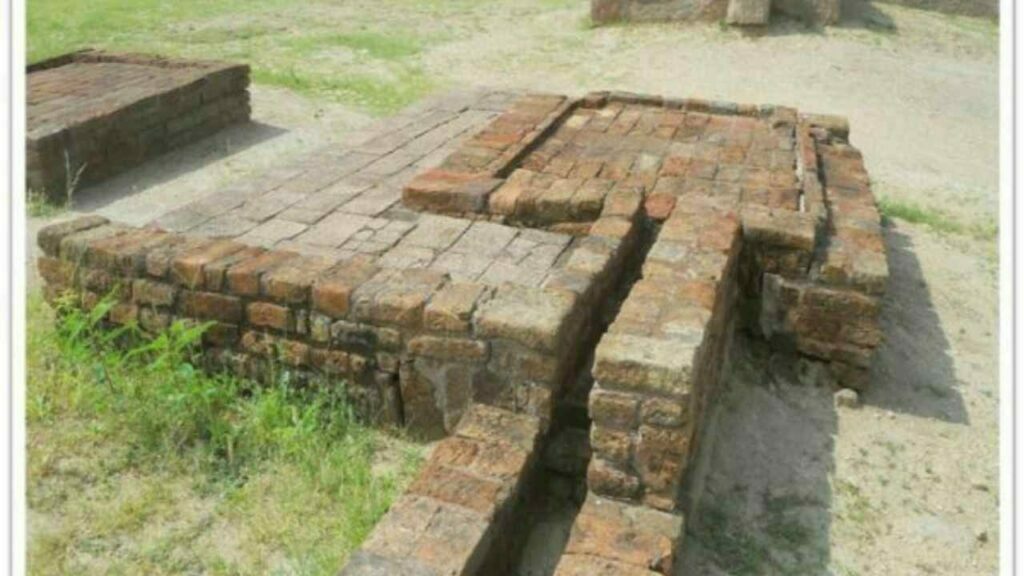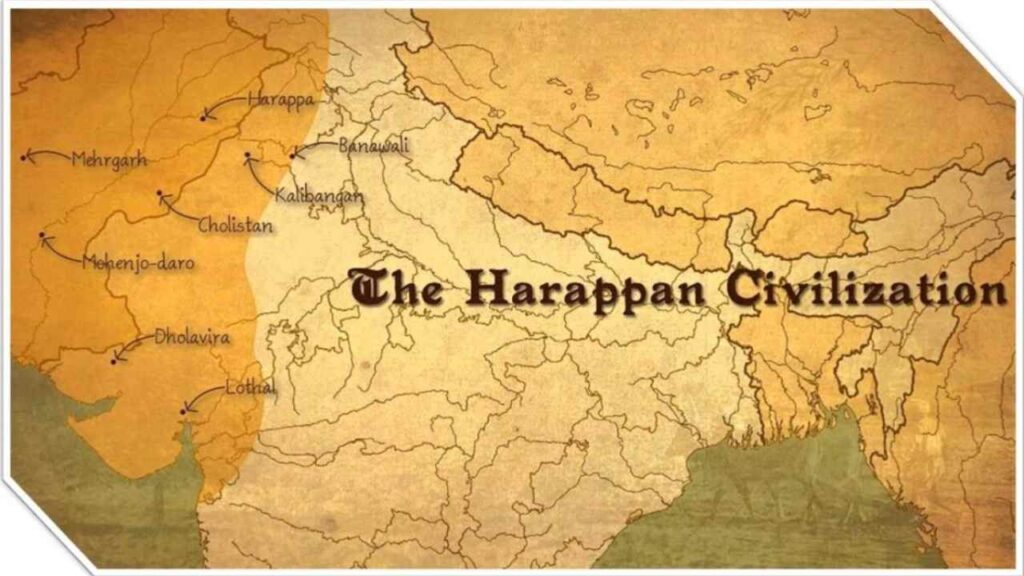The Great Indus Valley Civilization
Indus Valley Civilization
The Indus Valley Civilisation, which is also known as the Harappan Civilisation was the first urban civilisation in South Asia ,which was spread across the western part of South Asia that now lies in India, Pakistan and Afghanistan. It was contemporaneous with the civilisations of Mesopotamia and Egypt and forms a part of proto history of India and belongs to the Bronze Age.
The Mesopotamia, Egypt, China and the Indus Valley Civilization, are considered to be the four great civilisations of the ancient world, the first three (Mesopotamia, Egypt, and China) have been broadly studied and well-known to everyone. But the fourth and the largest of all, our own Indus Valley Civilisation that flourished along the flood plains of Indus and Ghaggar-Hakra around 2500 BC is lost to human memory and till date the information about it is limited. It was in the 20th century, the lost and forgotten Indus Valley Civilization was rediscovered, acknowledged and given equal importance with the other three civilisations (Mesopotamia, Egypt, and China).
In 1920s, the Archaeological Department of India carried out excavations in the Indus valley wherein the ruins of the two ancient cities, Mohenjodaro and Harappa were unearthed.
In 1924, John Marshall, Director-General of the ASI, announced to the world the discovery of a new civilisation in the Indus valley.
The Indus valley civilisation/Harappan civilisation can be classified into 3 phases:
- Early/pre Harappan phase- 3300 to 2600 BCE,
- Mature Harappan phase- 2600 to 1900 BCE
- Late Harappan phase- 1900 to 1300 BCE
The Early Harappan phase, known as the REGIONALISATION ERA was the formative, proto urban phase of the Harappan civilisation. It did not have large cities that defined the mature Harappan phase, nor did it have as much expertise in the craft specialisation.
Some of the early Harappan sites are:
- Padri in Gujarat
- Kalibangan in Rajasthan.
- Dholavira in Kutch.
- Harappa in west Punjab.
- Balakot, Amri and Bhirrana in Haryana.
- Kotdiji and Gumla.
The Mature Harappan phase or the INTEGRATION ERA was the urban phase of the Harappan Civilisation, which shows the characteristics of a full-fledged civilisation.
Late Harappan phase or the localisation era was the post urban phase defined by a decline in the cities. The settlements during this period were small compared to the mature Harappan phase.
Features of Indus Valley Civilisation
TOWN PLANNING
The Harappan city was divided into 2 parts:
- CITADEL (raised part) – situated to west, occupied a smaller area, rulers of city lived here.
- LOWER PART- common citizens lived, situated to east, was larger.
- The city planning roughly followed GRID PATTERN and streets ran from north and cut at right angles.
- They used burnt bricks of identical ratio of 1:2:4 in terms of Thickness: width: length.
- Uniformity in average size of bricks, 7x 14 x 28 cm3 for houses and 10 x 20 x 40 cm3 for city walls.
- Standardised brick size was in 1:2:4 ratio.
- No window faced the streets and they had excellent drainage system with covered drains. Each drain had a gentle slope so that water could flow through it.
- Drains in the houses were connected to those on the streets and smaller drains led into bigger ones. As the drains were covers, inspection holes were provided at intervals to clean them.

SOCIETY
- The Harappans refined the art of bead making.
- Copper, bronze, silver and gold were metals known and used by Harappans but Iron was not known.
- They were good at metallurgy and produced alloys.
- They wore garments of cotton/wool.
- The Harappan script was PICTOGRAPHIC and LOGOSYLLABIC (each symbol stood for a word).
- The Harappan writing was BOUSTROPHEDON (right to left and left to right in alternate lines).

ECONOMY
- The Mesopotamians called the Indus region as MELLUHA.
- The standard Harappan seal was in SQUARE/OBLONG PLAQUE shape made of STEATITE STONE.
- There was no metallic money in circulation and trade was conducted by means of barter.
- In Mohenjo-Daro, 3-cylinder seals of Mesopotamian type have been found.
- There were bead making factories at Chanhudaro and Lothal.
- A Dockyard has been excavated in Lothal and sea ports found at Rangpur, somnath and Balakot.
- Weights followed a BINARY SYSTEM in the lower denominations- 1,2,8,16,32, 64 and then decimal multiples of 160 like 160,320,640 etc.
- Weights were made up of Chert, limestone and steatite and generally cubical.
RELIGION
- Harappan civilisation is considered as a secular society as not a single structure qualifying as a temple has been found. GREAT BATH at Mohenjo-Daro was a sacred spot.
- Idolatry was practised. They generally worshiped mother goddess, pashupati mahadeva (proto-Shiva), lingam or yoni, pipal tree, humped bull etc.
- Fire altars have been found in kalibangan and lothal.
- Dead bodies were placed in north south direction.
AGRICULTURE
- The Harappan civilisation was earliest known civilisation to produce cotton, known as SINDON by Greeks.
- They grew wheat (especially in Mehrgarh) and rice (lothal).
- They also exploited riverine and marine resources.
- Harappan culture was not horse centred.
- Ploughed fields possibly with help of wooden ploughs (found in kalibangan).
- Terracotta models of plough have been found at Banwali and Bahawalpur.

Famous Harappan Sites
1. HARAPPA (Dayaram Sahini in 1921)
- Evidence of coffin burial and cemetery ‘H’ culture.
- 2 red stone idols of a Dancing girl and a Naked Bust of male, female genitalia.
- Granaries are located outside the citadel.
- Little bullock carts and Ekkas besides copper or bronze models of carts with seated drivers have been found.
- Rig Veda (Mandal VI) mentions it as HARVPIYA- a battle site ruins.
- It is situated in Montgomery district of Punjab, now in Pakistan on the left bank of river Ravi.
- Evidence of coffin burial and cemetery ‘H’ culture.
- 2 red stone idols of a Dancing girl and a Naked Bust of male, female genitalia.
- Granaries are located outside the citadel.
- Little bullock carts and Ekkas besides copper or bronze models of carts with seated drivers have been found.
- Rig Veda (Mandal VI) mentions it as HARVPIYA- a battle site ruins.
- It is situated in Montgomery district of Punjab, now in Pakistan on the left bank of river Ravi.
2. MOHENJODARO (R D Baneerji in 1922)
- Literally the mound of the dead is situated in larkana district of Sind on the right bank of river Indus.
- This city is also an example of conservatism as having been flooded almost 9 times, they never tried to shift to a safer place. Rather they came back to original site whenever the water table receded.
- Great bath is the most important public place located at the centre of citadel.
- Bronze dancing girl.
- College of priests.
- Large granary (inside the citadel).
- Piece of woven cotton cloth.
- Steatite statue of a bearded man supposed to be the priest king.
- Seals of 3 headed Pashupati Mahadeo, mother goddess.
- Evidence of ship/big boat.

3. LOTHAL ( S R Rao in 1957)
- It is situated in Gujarat on Bhogavar River , tributary of Sabarmati near Gulf of Cambay.
- Houses with entrances on the main street(houses of all other sites had side entries)
- Evidence of double burial (women and men together).
- Artificial brick dockyard connected through the Bhogavar River with Gulf of Cambay.
- Important sea trade centre and bead making factory.
- Painting on a jar resembling story of cunning fox in Panchatantra.
- Terracotta model of ship with stick immersed socket for mast and eyeholes
- No citadel complex, town is not divided into 2 sectors.
- Fire altars have been found
4. KALIBANGAN (Amalanand Ghosh 1953, BB Lal & BK Thapar 1961)
- It is situated in Ganga Nagar district of northern Rajasthan on the banks of now dry course of the Ghaggar River.
- Ploughed field
- Fire altars showing practise of cult of sacrifice
- Decorative bricks used in flooring only at this site.
- Provides evidence of Pre Harappan civilisation at lower layers of excavations and Mature Harappan at upper layers of excavations.
- Burials in circular and rectangular grave.
- Remains of massive brick wall around both citadel and lower town.
- Copper was known.
5. CHANHUDARO (NG Majumdar in 1931 and E makay)
- It is situated in Sind on the left plains of the Indus about 130 km south of Mohenjo-Daro.
- Only Harappan city without a citadel.
- Bead factory site as lots of beads, seals, ornaments unearthed.
- This site was major centre for craft production.
- Clay model of 4 wheeler.
- Bronze model of roofed chariot.
6. DHOLAVIRA (JP Joshi in 1990-91)
- It is situated in Gujarat and has a giant water reservoir.
- Unique water harvesting system.
- An inscription comprising 10 large sized signs of Harappan script similar to a signboard.
- Most unique feature of this site is its division into not 2 but 3 sections.
- Shows all 3 phases of Harappan culture.

7. KOTDIJI(Ghurey in 1835, Fazal Ahmed in 1955)
- Pottery was of distinctive character which was decorated to have developed from bands of brownish paint.
- City destroyed by force.
- An interesting motif appears to have developed from bands of loops and wavy lines into well-known fish scale pattern which later appears in Harappan pottery.
8. RAKHIGARHI
- Largest Indus valley civilisation site
- Provincial capital of Harappan civilisation.
- Shows all 3 phases of Harappan culture.
9. BANAWALI( R S Bist in 1973-74)
- It is situated in Hissar district of Haryana on the banks of now dry course of river Saraswati.
- Clay model of plough.
- High quality barley.
- Fire altars.
10. SURKATODA( JP Joshi in 1964)
- It is a costal site situated at head of Rann of Kutch.
- Both citadel and lower town is fortified- two being connected by intercommunicating gates.
- Bones of horses.
11. SUKTAGENDOR
- It is on Makran coast near Dashak river, Baluchistan
- Ash filled pots, copper axe.
- Originally a port, but later cut off from sea due to coastal uplift.
12. AMRI( Ghurey in 1835, Fazal Ahmad in 1955)
- It is situated in Sind west of river Indus
- From this site comes the beautiful painted humped Indian bull
13. ROPAR( YD Sharma in 1955-56)
- It is situated on Ropar district in Punjab on the bank of river Sutlej.
- Evidence of burying dog below human.
14. RANGPUR ( MS Vatsa in 1931, SR Rao in 1953-54)
- It is situated in Jhalwar district of Gujarat near Ahmedabad near Madar River.
- All 3 phases of Harappan culture found.
- Yellow and grey colour pots of pre Harappan people found.
15. ALAMGIRPUR( YD Sharma in 1958)
- It is situated in Meerut district of up and represents the last phase of Harappan culture.
- Impression of a cloth on a trough.

The Knowledge Hub is intended for a wide range of audiences, including students, professionals, and anyone who is curious about the world and wants to expand their knowledge base. It can be useful for research, education, and personal curiosity. The Knowledge Hub is constantly updated to reflect the latest information and insights, and our visitors are encouraged to check back often for new content. Thank You.
We also have live online classes where we teach 2 courses which are given below. Please go through them and if interested you can take a Free Trial Class.





